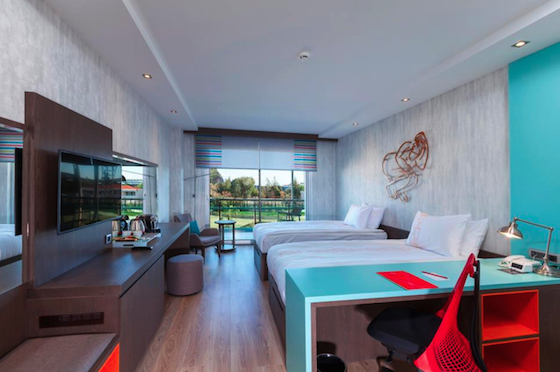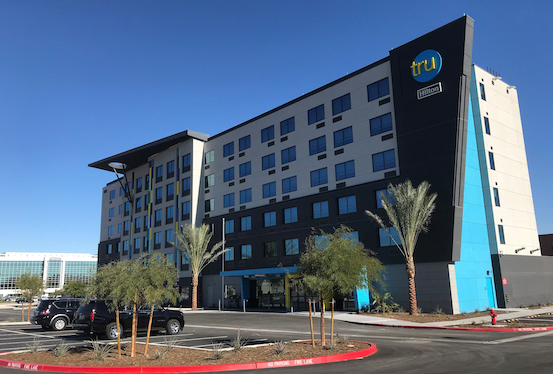That is the question. Whether ‘tis nobler in the mind to go the route of Best Western, (which debuted some 10 brands over the past six years alone) or blaze the trail of the independent hotelier (see Ian Schrager’s latest iteration of Public House or Cyril Aouizerate’s highly communal Mob Hotels)?
Here’s a look at the power of the brand. (Stay tuned next week for Part 2).

‘Is there customer confusion? I think there is’
Best Western knows something about crafting a brand. In just the past six years, the company’s debuted 10 brands, with those newer ones (Like Glo and Vib) comprising 40% of its current pipeline.
Next year, the company wants that number to be closer to 50%.
“We’re certainly focused on global growth, both in North America and Asia,” says Ron Pohl, Best Western’s senior vice president and chief operations officer. “The midmarket hotels in China are where the opportunity really lies.”
But just how differentiated are these newer brands, both in the marketplace and even just between one another? A description of Vib could easily be IHG’s newly debuted midscale Avid or Red Lion’s Hotel RL. Design for the “connected traveler,” with “social spaces,” guest rooms have plenty of USB ports and smart TVs. And words like “convenience, technology and social engagement.” What are the elements of Vib and Glo that are truly differentiated?
Pohl says the true differentiation is in target markets. While you’d find both a Vib and Glo in Manhattan, you wouldn’t find a Vib in Des Moines, Iowa for instance. Vib also has a smaller guestroom which makes it cost effective for the urban areas it’s angling for.
But even Pohl admits there’s a certain degree of oversaturation when it comes to guest perception.
“We know there are an awful lot of brands out there today. Is there customer confusion? I think there is,” says Pohl, who says tapping into the right range of brands is what’s worked for Best Western.
Pohl points to BMW, which started out with a tighter range of models but has since more than doubled its offerings.
“I see our industry as very similar to that and we’ve kind of taken that approach with price point and what customers are expecting today,” Pohl says. “Our key focus is: what does next generation of travelers look like and how relevant does Best Western need to be as it relates to that?”

Loyalty counts
Being able home in on what the consumer wants is in many ways the name of the game. When Hilton Worldwide first launched Tru by Hilton in 2016, it was an attempt to fill a gap in midscale.
Now there are nine Trus, more than any other newcomer to the midscale segment, according to Alexandra Jaritz, global head at Tru.
The key is a real push to listen (and respond) to customer feedback. That means social media influencers to create more organic ways for people to experience the brand as well as building social opportunities right into the properties.
“Each hotel has a mural wall to showcase things to do and see in the local area, giving each property a unique local touch and a sense of place,” says Jaritz. “These murals act as social currency for our guests, who love taking selfies in front of them.”
And for Hilton, like many of the other big companies, loyalty is what counts.
“As a new entry into the midscale segment, our research showed that travelers were more likely to book Tru when they found out it was part of the Hilton family of brands. We created the Midscale Advisory Group – a team of ten dedicated Hampton owners – to work through every aspect of Tru by Hilton. This means that we were able to tackle key issues developers face currently, as well as the bigger upcoming challenges.”
Getting far away from the ‘vanilla boxes’
Piers Schmidt is the founder of consulting agency Luxury Branding. While he thinks that “time will tell” in terms of how brands created by the bigger hotel groups will fare, he also thinks they also deserve credit for a mentality shift.
“If you cast your mind back 10 years, we would have been all pretty safe in saying the big groups were stodgy, staid, pretty good at rolling out very vanilla boxes,” says Schmidt who points to Starwood’s debut of W as a game changer.
Since then, “there’s been a really good ramp-up in innovation and improvement which is great for the consumer,” Schmidt continues. “The traveler, the guest has never had it so good in terms of a quality product from economy at the bottom right up through mid-scale and upscale all the way up to luxury.”
